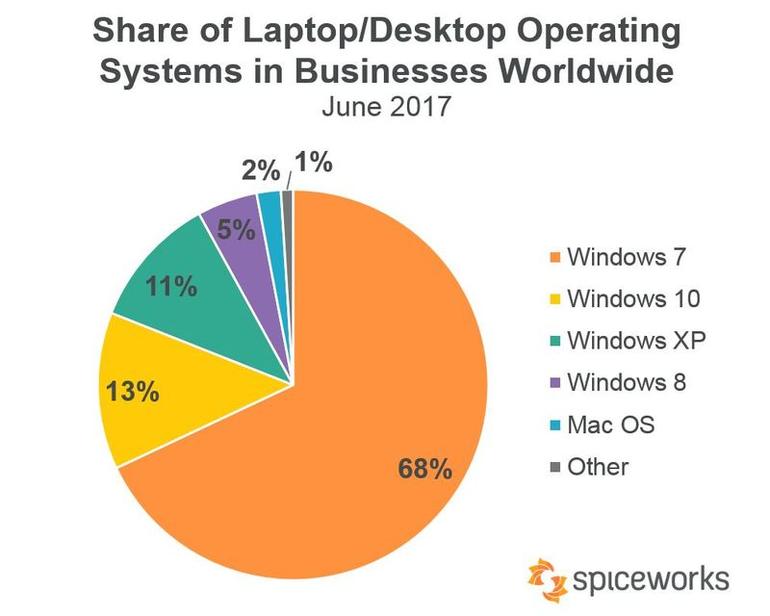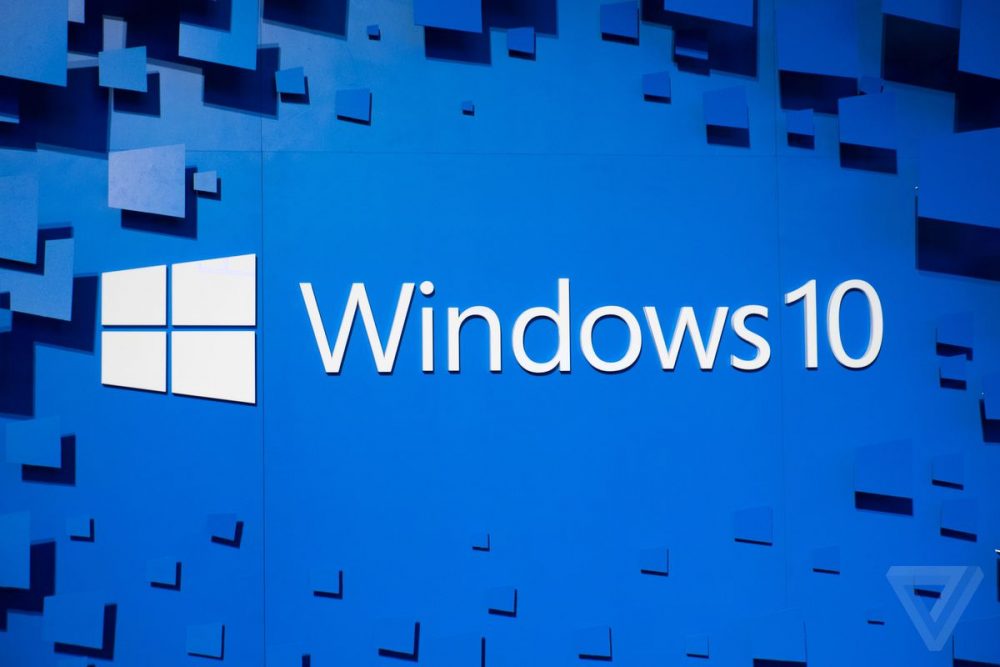Windows 10 only slightly more popular than Windows XP among firms
Microsoft’s aged Windows XP operating system is almost as widely used within businesses as Windows 10, according to a new survey.
Despite Windows XP being 16-years-old and, in general, no longer patched against hacks, XP is still being used on 11% of laptops and desktops, compared to 13% running Windows 10, the Spiceworks survey found.
“Despite the gains in Windows 10 penetration, the absolute share of computers running the OS remains relatively low,” writes Peter Tsai, senior technology analyst at Spiceworks, of the data it gathered from hundreds of thousands of IT professionals.
Both Windows 10 and XP are a long way behind Windows 7, running on 68% of PCs. However, Windows 10 is now the second most used OS, according to the Spiceworks figures, and its overall share has improved since March this year, when it was only running on nine percent of machines.

Windows 10 is being run on at least one PC within 60% of firms, according to Spiceworks, compared to 84% running Windows 7 on at least a single machine, 42% running Windows XP and 35% running Windows 8.
However, these figures provide little indication as to whether each operating system is widely deployed or just being trialled on a single machine. When combined with Spicework’s figures on the absolute share of each OS within firms, it suggests that Windows 10 deployments are often restricted to small-scale testing.
This ‘penetration rate’ for Windows 10 is also lower than forecast by a Spiceworks survey of more than 500 IT pros just before the 2015 Windows 10 launch, when 73 percent said their organization was planning to adopt Windows 10 within two years.
Microsoft says there are more than 50 million business users of Windows 10, and recently highlighted that all 400,000 staff within Accenture, a global consulting company and Microsoft partner, are switching to the OS.
When Windows 10 launched in July 2015, Microsoft predicted it would be installed on one billion devices within two to three years.
Today, a few days shy of Windows 10’s two year anniversary, the OS is installed on half that original target, about 500 million devices. Consumer growth seems to be slowing, with the average daily increase in the number of Windows 10 devices dropping by more than two thirds since Windows 10’s 2015 launch.
It could be that Windows adoption is currently in a lull between two spikes. Microsoft’s offer of a free upgrade to Windows 10 for non-enterprise users ended in July last year, while most businesses are yet to begin large-scale migrations to Windows 10, with analyst house Gartner predicting that 85 percent of organizations will start a Windows 10 production deployment by the end of this year.
A poll earlier this year, found 52% of firms were still running Windows XP on at least one machine. However, Spiceworks’ latest figures showed overall use of XP is diminishing, with the OS installed on some 11% of PCs, down from 14% in March.
Tsai says recent high profile ransomware outbreaks like WannaCry and Petya are giving organizations an incentive to move to more modern operating systems that are still being regularly patched by Microsoft.

